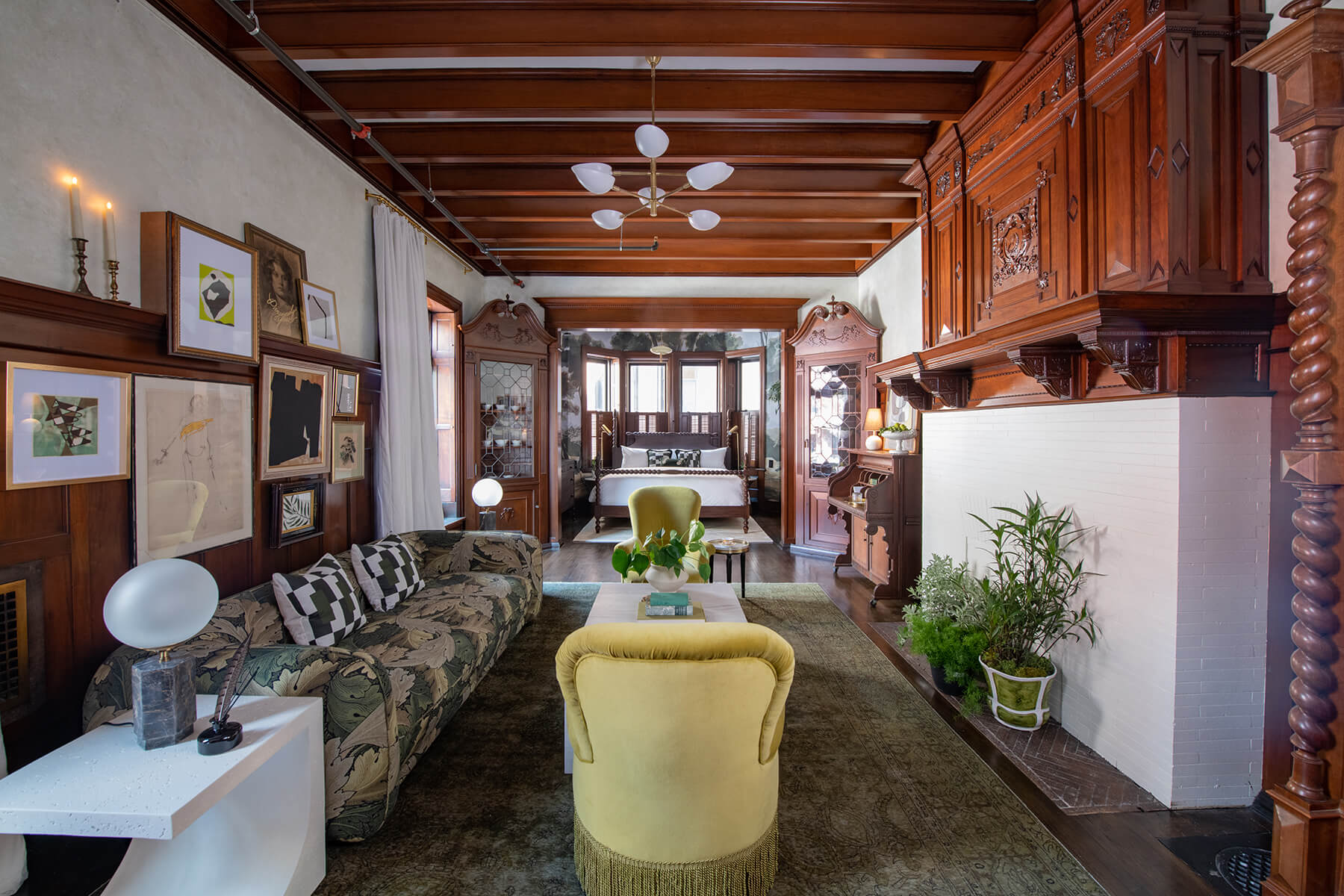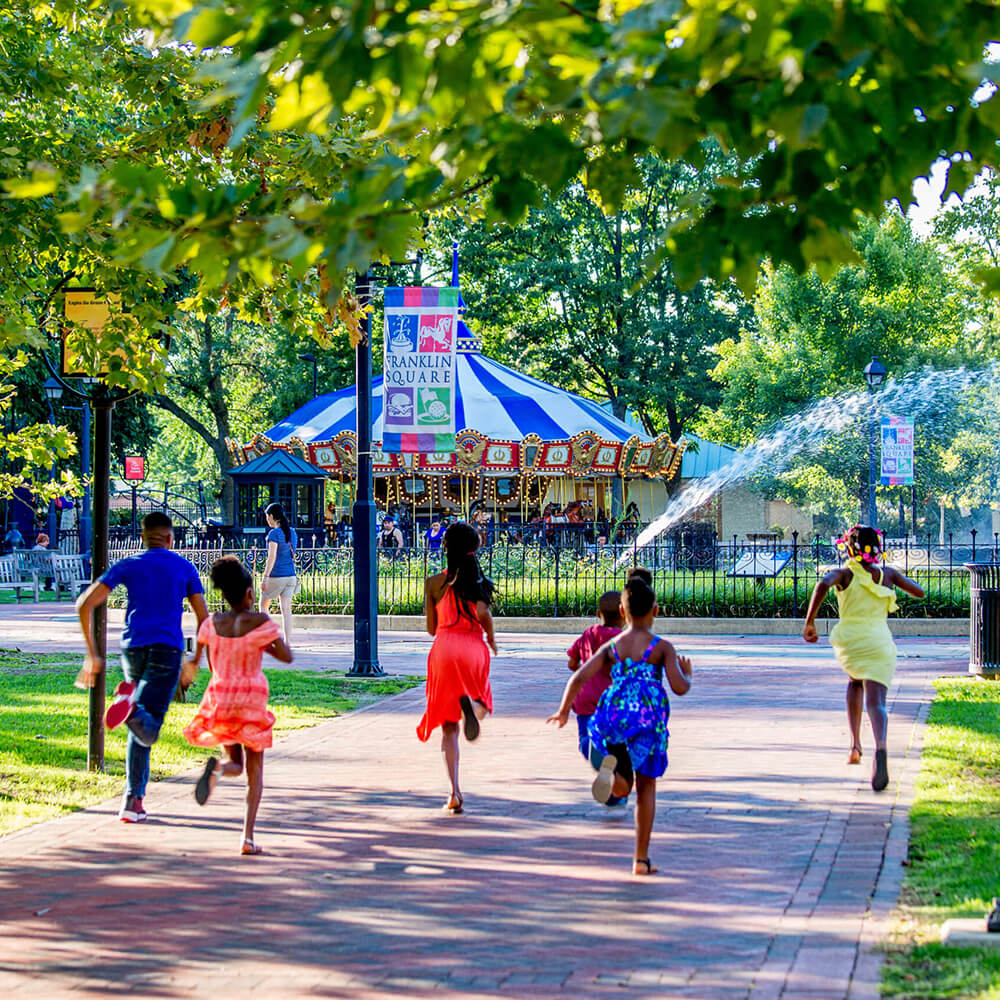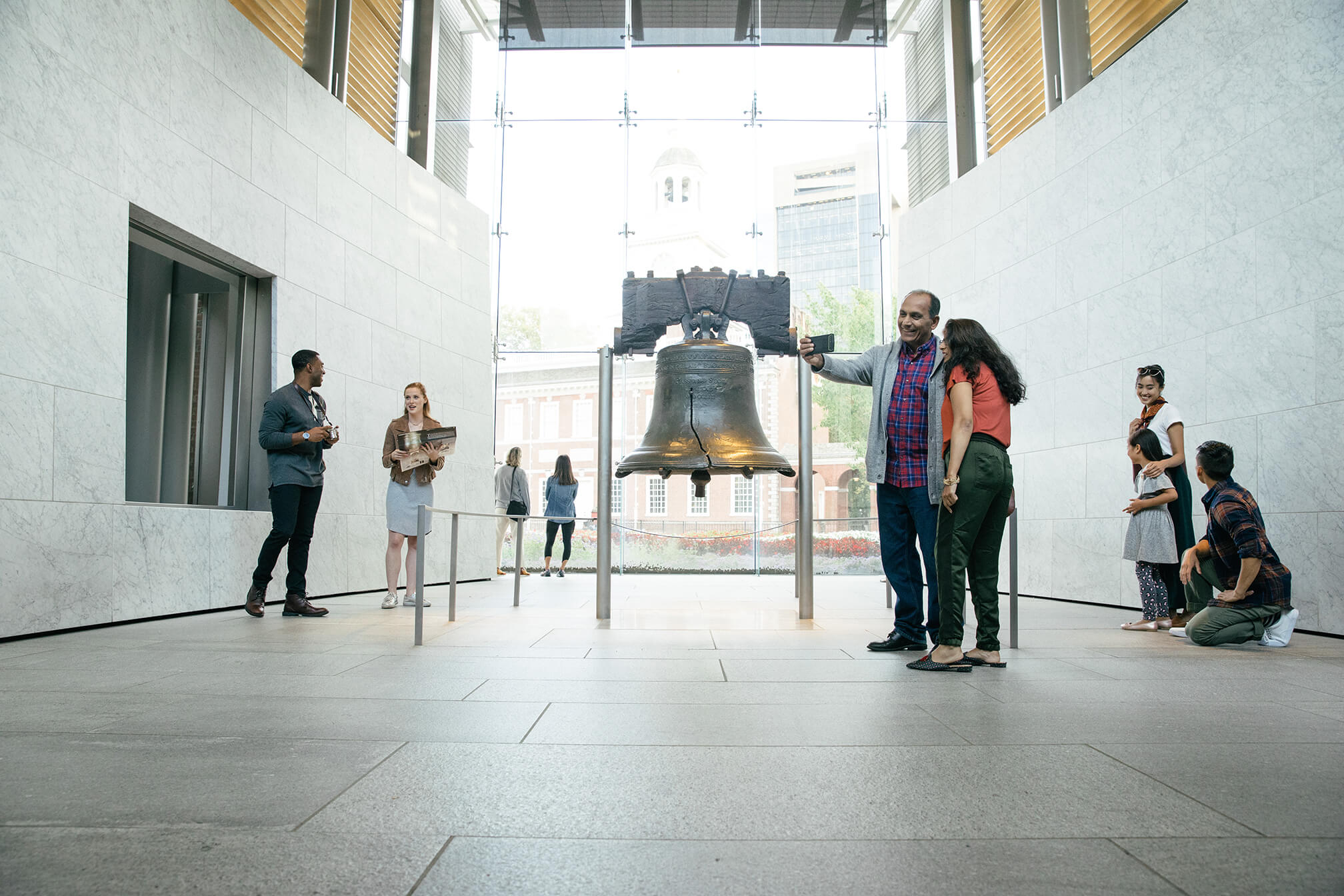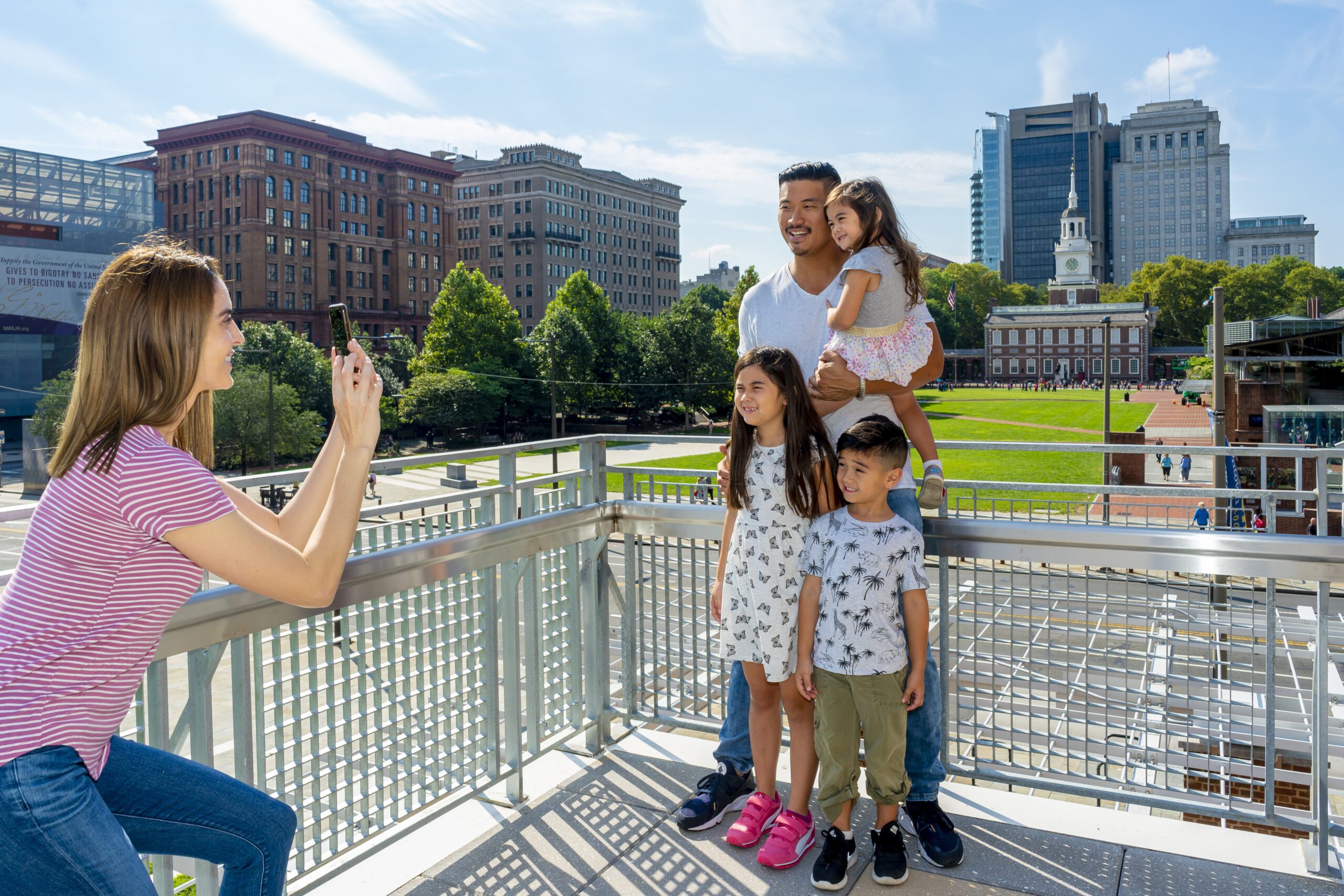
In the time leading up to the Revolutionary War, Philadelphia was the epicenter of the great American Experiment.
The city is where both the Declaration of Independence and the Constitution were written and signed, and where the first U.S. Presidents lived — all within the same block. Today, Philadelphia is home to 68 National Historic Landmarks. This includes America’s “most historic square mile,” where the Founders adopted ideas for an independent new nation.
Independence National Historical Park
Independence National Historical Park is a robust collection of sites in Philadelphia’s Old City neighborhood that includes Independence Hall. Then the Pennsylvania State House, this historic building is where the Declaration of Independence was signed on July 4, 1776. It is also where the Constitution was crafted, fiercely debated, and ultimately signed.
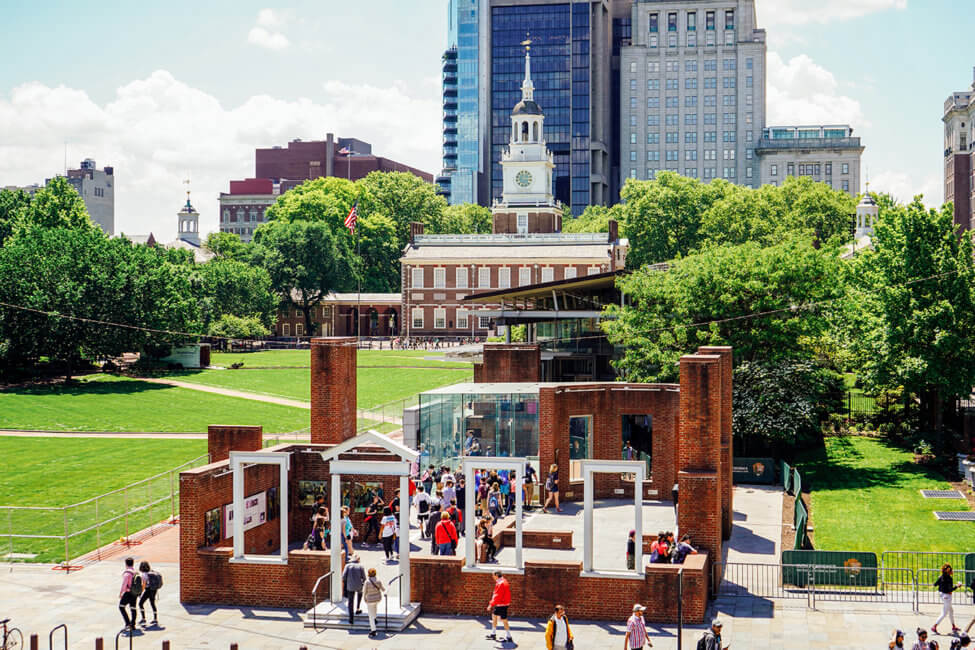
Independence Hall, the Liberty Bell Center and the President’s House Historic Site are all free experiences available in Independence National Historical Park. Photo by K. Huff for PHLCVB.
Next to Independence Hall is Congress Hall, where the U.S. Congress met when Philadelphia was the temporary capital of the United States. Congress Hall hosted two major presidential inaugurations, including the swearing-in of George Washington for his second term in 1793.
Across the street is the Liberty Bell Center, where the international symbol of freedom is located. Inside, guests travel through exhibitions documenting the bell’s creation and significance, leading up to seeing the Bell itself.
Before the White House was built, Presidents George Washington and John Adams resided in Philadelphia. Located next to the Liberty Bell Center, The President’s House Site marks the footprint of the historic residence. The site features the profound and untold stories of the enslaved individuals who built and labored within its walls.
Inside the Franklin Court Courtyard — where the foundation of Benjamin Franklin’s home and his grandson’s printing business lies — is the Benjamin Franklin Museum. Inside, guests can explore the life, legacy, and inventions of Philadelphia’s most famed citizen. Next door is the Franklin Court Printing Office, where visitors can see first-hand how an 18th century printing office operated and discover the pivotal role the printed word played in the American Revolution.
Carpenters’ Hall was the site of the first Continental Congress in 1774, where the seeds of the Revolutionary War were sown. Today, the building displays hand tools, chairs used by the Founders, and other historical artifacts for visitor tours.
At the Betsy Ross House, tour the home of reported American flag maker Betsy Ross and learn about her interaction with George Washington and the other Founders. Betsy herself gives tours of the house, as well as hosts special events and programming.
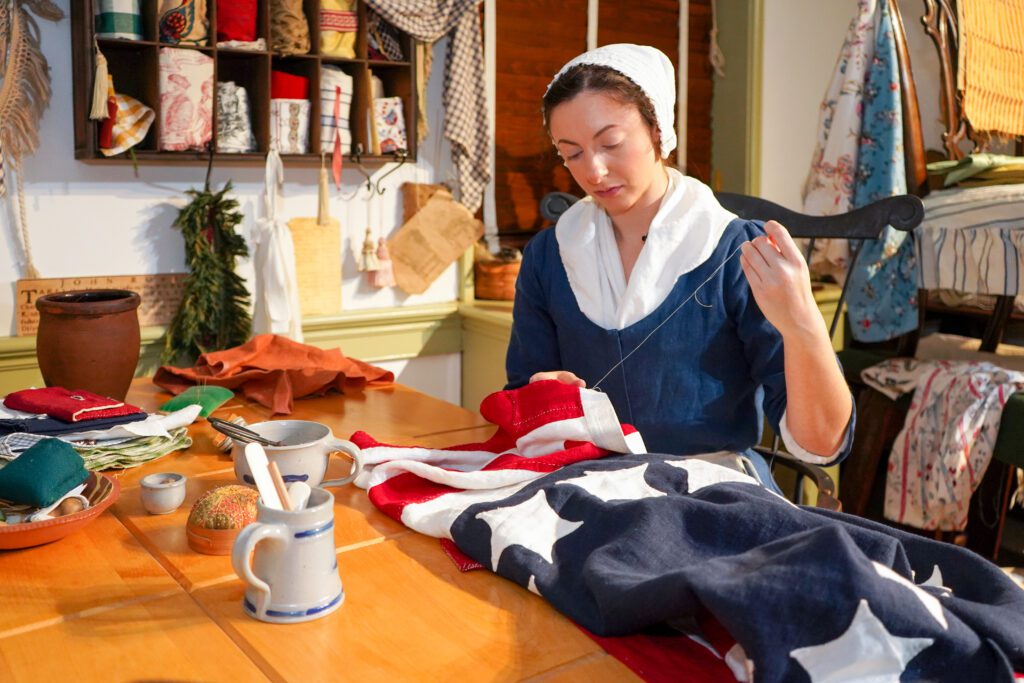
Founded in 1695, Christ Church & Burial Ground was the place of worship for numerous Founders during their time in Philadelphia. Today, visitors can still worship at the church and take a guided tour of its burial grounds — where Benjamin Franklin and four other signers of the Declaration of Independence are buried.
A block from Independence Hall is Washington Square, one of the city’s original squares. The park is home to a statue of General George Washington and the Tomb of the Unknown Revolutionary War Soldier.
Outside of the Historic Square Mile
There’s even more of historic Philadelphia to discover outside of Independence National Historic Park. Step back in time to carefully preserve the nation’s oldest continuously inhabited street. Dating back to 1703, the preserved colonial street is home to the Elfreth’s Alley Museum, which tells the story of the street’s 300-plus year history.
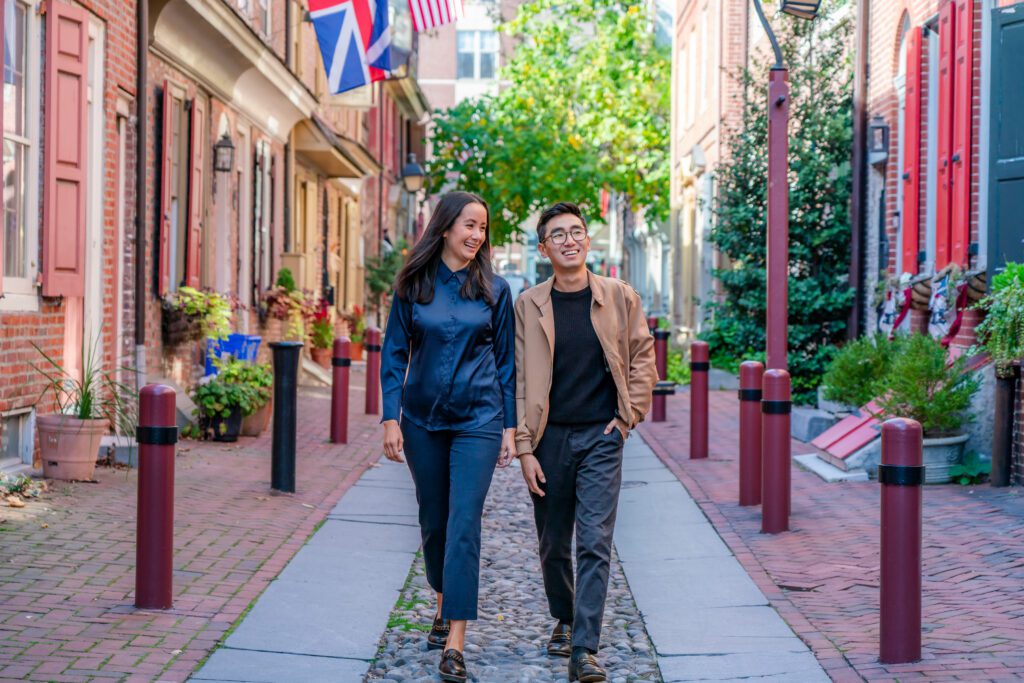
Up north in historic Germantown, the Johnson House Historic Site is the former home of Quaker abolitionists and later a waystation for the Underground Railroad. The preserved home now operates as a museum and education center where visitors can learn about its significance in the abolitionist era.
The Edgar Allan Poe National Historic Site is the former Philadelphia home of the iconic gothic author and poet. It is believed to be where Poe wrote some of his more memorable works, including “The Tell-Tale Heart” and “The Black Cat.”
Philadelphia is also home to the oldest operating theater in the United States, the Walnut Street Theatre. Founded in 1809, the theater presents Broadway favorites as well as original works from Philadelphia playwriters.
For more historic experiences in Philadelphia visit our Old City neighborhood guide.
